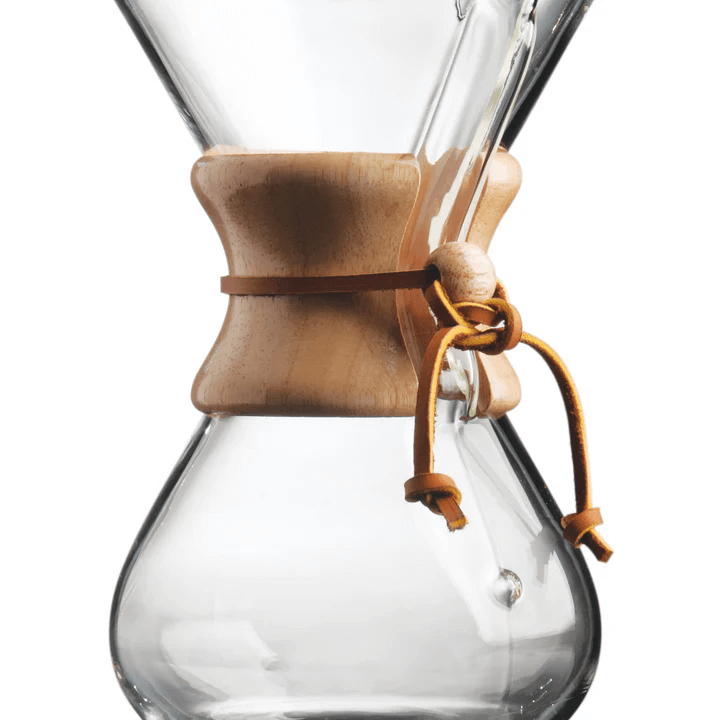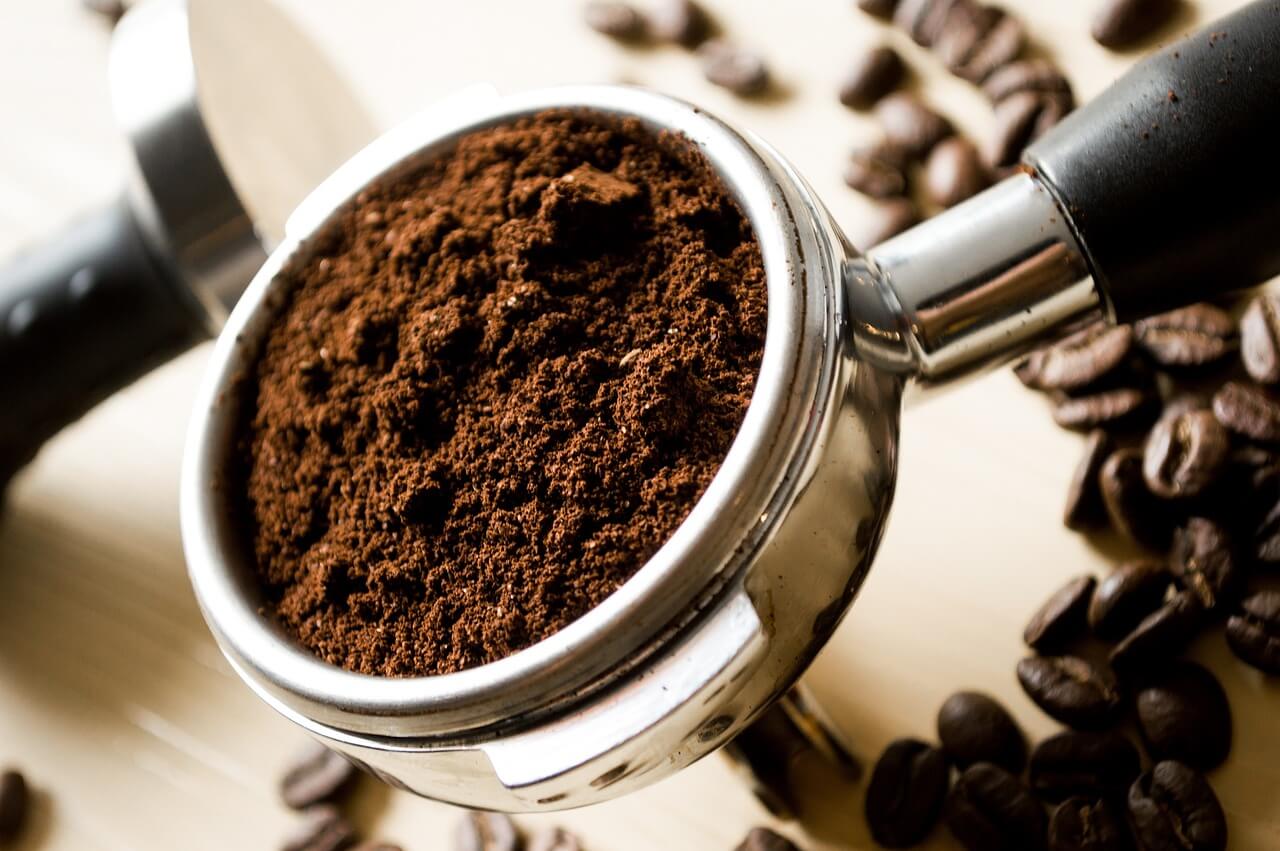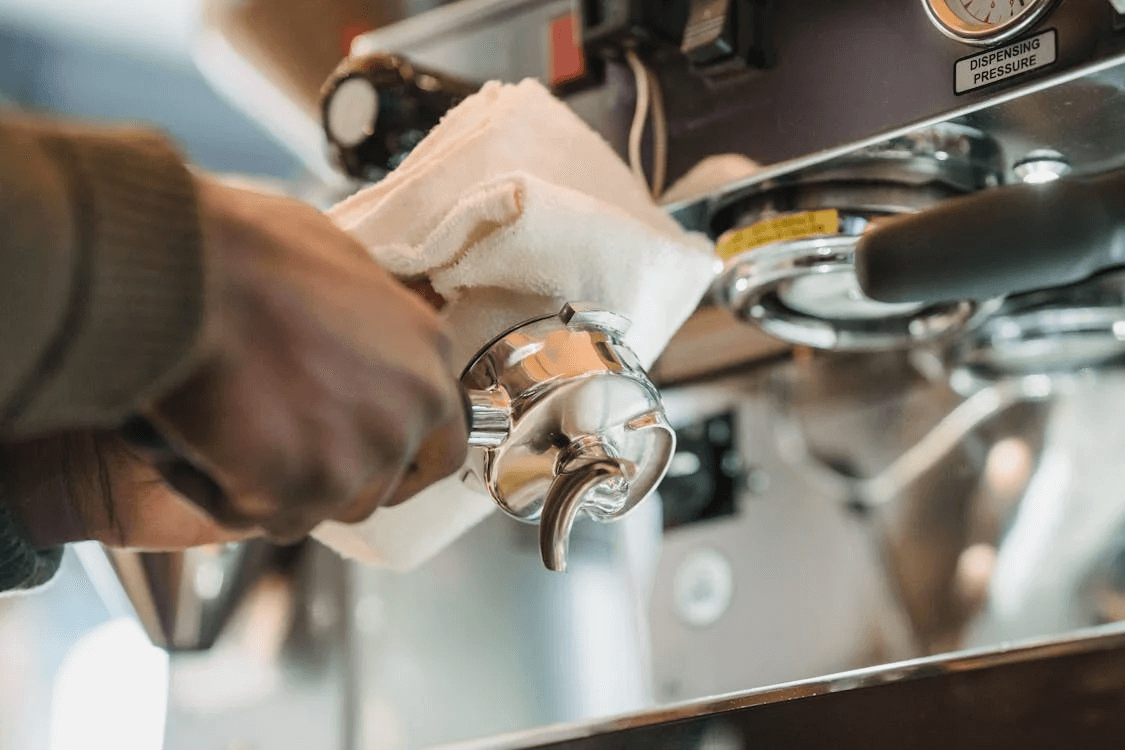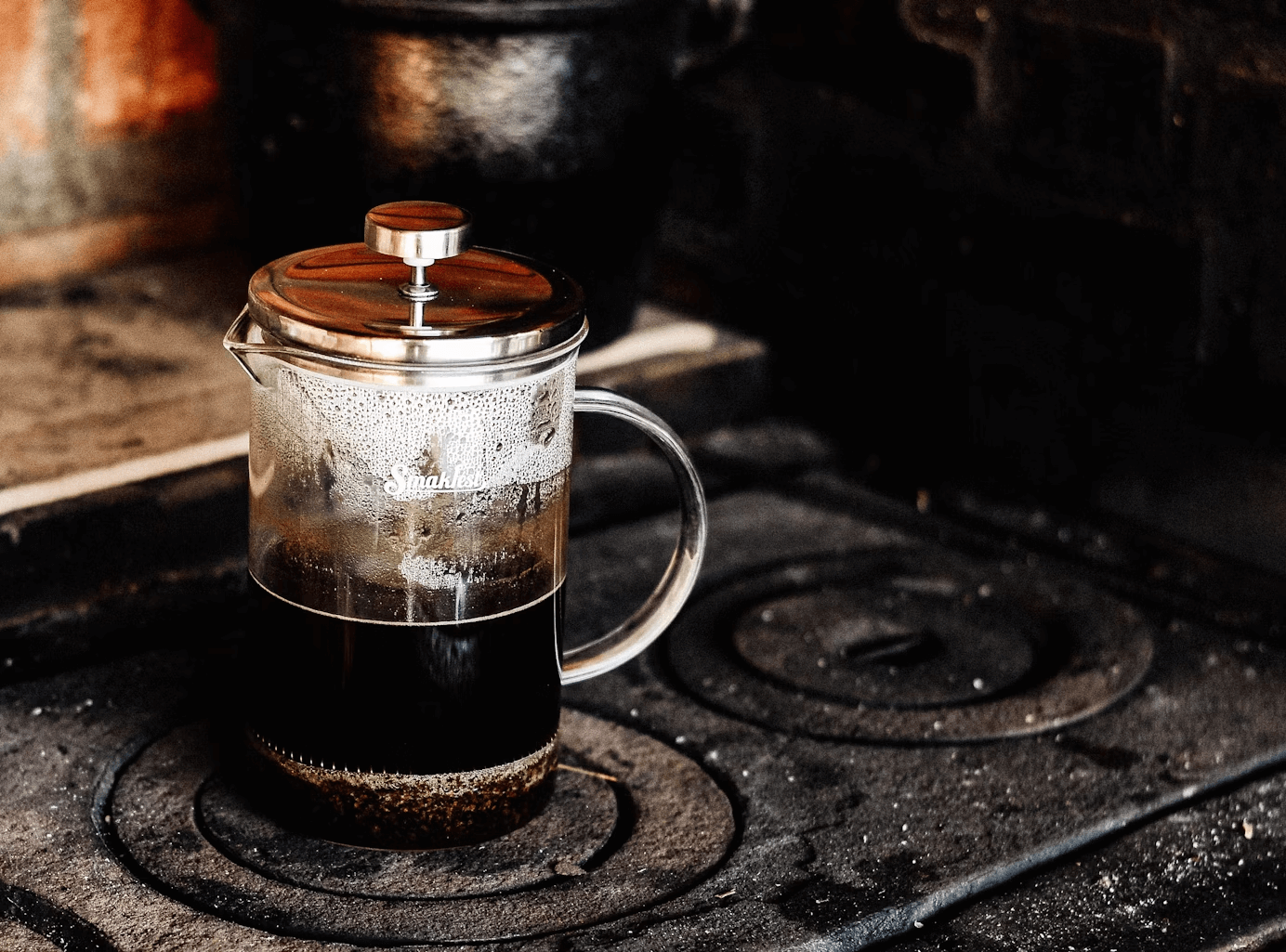Cleaning your Ninja coffee maker is not just about keeping your Ninja coffee bar looking good—it’s essential to maintaining the machine’s performance and ensuring every brew tastes fresh.
Without regular cleaning, coffee oils, mineral deposits, and other residues can build up, negatively impacting both flavor and function.
In this guide, we walk you through simple steps to ensure your Ninja coffee maker remains in peak condition while also offering useful descaling tips to keep the internal parts running smoothly.
How Do You Clean the Carafe and Filter Basket?
“I really enjoy using this. It opens up the flavor of the coffee and takes away some unwanted bitterness. Leaving my coffee tasting delicious and smooth.” ~ Verified Buyer, Jared Forsythe
Cleaning the glass carafe and filter basket of a Ninja coffee maker is essential to maintain thequality of your coffee and the longevity of the machine.
The following steps outline the best practices for cleaning these components:
Step 1. Disassemble the Carafe and Filter Basket
Remove the glass carafe and filter basket from the Ninja coffee maker. Before disassembly, ensure that the coffee maker is turned off and unplugged to avoid any electrical hazards.
Step 2. Rinse With Warm Water
Rinse the glass carafe and filter basket under warm running water to remove loosecoffee grounds and residues. This initial rinse helps prepare the components for a more thorough cleaning.
Step 3. Use Mild Detergent
Fill the carafe with warm water and add a few drops of mild dishwashing detergent. Scrub the interior and exterior surfaces of the carafe with a soft sponge or cloth, paying special attention to any coffee stains or buildup.
Step 4. Clean the Filter Basket
For the filter basket, use a soft brush or cloth to scrub away any coffee grounds and oils. Ensure that all crevices and mesh areas are thoroughly cleaned to prevent clogging and ensure optimal performance.
Step 5. Rinse Thoroughly
After scrubbing, rinse both the carafe and filter basket thoroughly with warm waterto remove all soap residues.
Cleaning solution residues, such as white particles, can affect the taste of coffee beans, so it is crucial to ensure they are completely rinsed away.
Step 6. Dry Completely
Allow the carafe and filter basket to air dry completely before reassembling them into the coffee maker.
Alternatively, you can wipe them down with a clean, dry cloth. Ensuring that these components are dry helps prevent mold and mildew growth in your Ninja coffee bar.
Dishwasher Option
Some Ninja coffee maker models have dishwasher-safe carafes and filter baskets.
Refer to the user manual to confirm if your model is dishwasher safe. If so, place the carafe and filter basket on the top rack of the dishwasher and run a normal cleaning cycle.
Key Finding: A study conducted by NSF International found that 50% of coffee maker reservoirs tested contained mold and yeast, ranking them as the fifth most germ-infested area in the household. |
How Do You Clean the Water Reservoir?
Cleaning the water reservoir of a Ninja coffee maker is essential to maintain the quality of the coffee, the longevity of the machine, and the general cleanliness of the Ninja coffee bar.
The following steps outline the proper procedure for cleaning the water reservoir:
Step 1. Remove the Reservoir
Detach the water reservoir from the coffee maker. This is typically done by lifting it straight up or sliding it out, depending on the model.
Step 2. Empty the Reservoir
Pour out any remaining water. It is important to start with an empty reservoir to ensure thorough cleaning.
Step 3. Rinse with Warm Water
Rinse the inside of the reservoir with warm water to remove any loose debris or coffee grounds. Avoid using hot water as it may damage the plastic.
Step 4. Use Mild Soap
Add a few drops of mild dish soap to the reservoir. Fill it halfway with warm water and use a soft cloth or sponge to scrub the interior.
Pay special attention to the corners and any areas with visible stains or buildup. Some coffee makers just naturally build up more stains than others.
Step 5. Rinse Thoroughly
After scrubbing, rinse the reservoir thoroughly with warm water to remove all soap residues. Again, if you don’t completely rinse out cleaning solution residues, they can affect the taste of your morning coffee and ruin your day.
Step 6. Clean the Lid and Exterior
If the reservoir has a lid, clean it separately using the same method. Wipe down the exterior of the reservoir with a damp cloth to remove any spills or stains.
Step 7. Dry Completely
Allow the reservoir to air dry completely before reattaching it to the coffee maker. This helps prevent mold and mildew growth in your Ninja coffee bar.
Step 8. Reattach the Reservoir
Once dry, reattach the reservoir to the coffee maker, ensuring it is securely in place.
Note: Consult the machine's instruction manual for any specific cleaning guidelines or safety precautions. Although the cleaning procedure is likely to be similar to the usual process, it's always a good idea to verify because coffee makers can sometimes need special care. |
What Descaling Solutions Can You Use?
A descaling solution is essential for maintaining the efficiency and longevity of a Ninja coffee maker. These solutions help remove mineral deposits, such as calcium and lime, that accumulate over time due to the use of hard water in coffee makers.
There are various descaling solution options available, each with its own advantages and disadvantages.
Vinegar
White vinegar is a common household item that can be used as an effective descaling solution. It is both affordable and readily available.
To use white vinegar as a descaling solution, mix equal parts of white vinegar and water and pour the mixture into the water reservoir. Run a descaling cycle as per the manufacturer’s instructions.
However, white vinegar can leave a strong odor, so it's important to run a cleaning cycle or two to remove any residual smell.
Lemon Juice
Lemon juice is another natural descaling agent that can be used as an alternative to white vinegar. The citric acid in lemon juice helps break down mineral deposits.
To use lemon juice as a descaling solution, mix one-part lemon juice with two parts water and pour the mixture into the water reservoir. Run a descaling cycle and follow up with a cleaning cycle or two to remove any lemon residue.
Lemon juice is less pungent than white vinegar but may not be as effective if your coffee makers have heavy scaling.
Baking Soda
While not as commonly used as white vinegar or commercial solutions, baking soda can also be employed as a descaling solution. Mix a few tablespoons of baking soda with water to create a solution and pour it into the water reservoir.
Run a descaling cycle and follow up with a cleaning cycle or two. Baking soda is a mild abrasive and can help with light scaling, but it may not be as effective for more severe mineral buildup in your Ninja coffee bar.
How Do You Run a Descaling Cycle?
To run a descaling cycle on a Ninja coffee maker, follow these steps to ensure the removal of mineral buildup and maintain the machine’s performance.
Descaling is a crucial maintenance task that helps prevent clogs and ensures the longevity of the coffee maker.
Step 1. Prepare the Descaling Solution
Depending on the descaling solution you choose, either mix a commercial descaling solution according to the manufacturer’s instructions or prepare a homemade solution using equal parts white vinegar and water.
Step 2. Fill the Water Reservoir
Pour the descaling solution into the water reservoir. Ensure the reservoir is filled to the max fill line to allow the solution to circulate through the entire system.
Step 3. Start the Descaling Cycle
Place the empty carafe under the brew basket.
Select the full carafe size and press the “Clean” button. If your model does not have a “Clean” button, select the brew cycle and let it run as if you were brewing a full carafe of coffee.
Step 4. Pause the Clean Cycle
Midway through the clean cycle, pause the machine to allow the descaling solution to sit in the internal components. This soaking period helps to break down mineral deposits more effectively. Let it sit for about 30 minutes before you resume the clean cycle.
Step 5. Resume and Complete the Clean Cycle
After the soaking period, resume the clean cycle and let it complete. The solution will pass through the machine, cleaning the internal components.
Step 6. Rinse the System
Once the descaling cycle is complete, empty the carafe and rinse it thoroughly.
Refill the water reservoir with fresh water and runat least two full cycles of clean water through the machine to remove any residual descaling solution. This multiple-clean cycle technique ensures no descaling solution remains, which could affect the taste of your coffee.
Step 7. Clean the Components
After the final clean cycle, clean the carafe, brew basket, and water reservoir withwarm, soapy waterto remove any lingering descaling solution.
Rinse thoroughly and dry before reassembling the coffee maker.
Tip: Descale your coffee maker every three months or whenever you notice a bubbling sound, which indicates a potential buildup of minerals. This helps guarantee you continue brewing the highest quality iced coffee and more! |
How Do You Clean the Exterior Surfaces?
Cleaning the exterior surfaces of a Ninja coffee maker is essential to maintain its appearance and functionality.
The following steps outline the process for effectively cleaning the exterior surfaces:
Unplug the Coffee Maker
Before beginning any cleaning process, ensure the coffee maker is unplugged to avoid electrical hazards.
Use a Damp Cloth
Wipe down the exterior surfaces with a damp, lint-free cloth. This helps to remove dust, fingerprints, and minor spills. Avoid using excessive water, as it can seep into the machine and cause damage to your Ninja coffee bar.
Add a Mild Cleaning Solution
A mild cleaning solution can be used for more stubborn stains or smudges.
Mix a small amount of dish soap with warm water. Dip the cloth into the solution, wring it out thoroughly, and then wipe the surfaces. Ensure that no soap residue is left behind by wiping it again with a clean, damp cloth.
Avoid Abrasive Cleaners
Do not use abrasive cleaners, scouring pads, or harsh chemicals, as these can scratch or damage the surface of the coffee maker.
Drying
After cleaning, wipe down the surfaces with a dry, soft cloth. This helps prevent water spots and ensures that the coffee maker is completely dry before use.
Cleaning the Control Panel
Special care should be taken when cleaning the control panel. Gently wipe the buttons and display them with a slightly damp cloth.
Avoid excessive moisture to prevent damage to the electronic components of your Ninja Coffee bar.
Regular Maintenance
Regularly cleaning the exterior surfaces can prevent grime buildup and maintain the coffee maker’s aesthetic appeal.
It is recommended that this cleaning routine be performed at least once a week or as needed based on usage.
Recommendation: After brewing, be sure to take out the filter and discard the used coffee grounds. Regularly clean the filter using warm, soapy water to prevent bacteria buildup. This is especially important for reusable nylon filters, as they can wear out or become less effective over time. |
How Do You Clean the Removable Parts?
Cleaning the removable parts of a Ninja coffee maker is essential to maintain its performance and longevity. The removable parts typically include the carafe, filter basket, water reservoir, and any other detachable components specific to the model.
Proper cleaning of these parts ensures that the coffee maker operates efficiently and produces high-quality coffee.
Carafe
The carafe should be cleaned after each use to prevent coffee stains and residue buildup. You can remove and hand wash it with warm, soapy water using a non-abrasive sponge.
For stubborn stains, a mixture of baking soda and water can be used to scrub the interior. Rinse thoroughly to remove any soap or cleaning solution.
Filter Basket
The filter basket should be emptied and rinsed after each use. It can be washed with warm, soapy water and a soft brush to remove any coffee grounds and oils. Avoid using a wire brush or a hard bottle brush to prevent damage.
Ensure that all parts of the filter basket are thoroughly cleaned and rinsed to prevent any residual taste from affecting future brewing.
Water Reservoir
The water reservoir should be cleaned regularly to prevent mineral buildup and contamination. You can remove and hand wash it with warm, soapy water.
Avoid using harsh chemicals or abrasive materials that could damage the reservoir. Rinse thoroughly to ensure no soap residue remains.
Other Removable Parts
Depending on the model, there may be additional removable parts, such as the drip tray, frother, or lid. These parts should be cleaned according to the manufacturer’s instructions.
Generally, they can be washed with warm, soapy water and a soft cloth or sponge. Ensure all parts are completely dry before reassembling the coffee maker.
Dishwasher Safety
Some removable parts of the Ninja coffee maker may be dishwasher-safe. The user manual should be consulted to determine which parts can be safely cleaned in a dishwasher.
Typically, the carafe and filter basket are dishwasher safe, but placing them on the top rack is advisable to avoid high heat damage.
Maintain Your Coffee Maker for Years of Great Coffee
Proper care and cleaning of your Ninja coffee maker are crucial for ensuring great-tasting coffee and machine longevity. By following the steps outlined in this guide—ranging from cleaning the water reservoir and carafe to descaling and maintaining exterior surfaces—you’ll improve the efficiency of your machine and enjoy a consistently delicious brew.
Regular upkeep prevents the buildup of minerals and bacteria, ensuring your favorite coffee tastes just as good in every cup. Make it a practice to clean your machine regularly so your coffee-making experience stays fresh and hassle-free.








